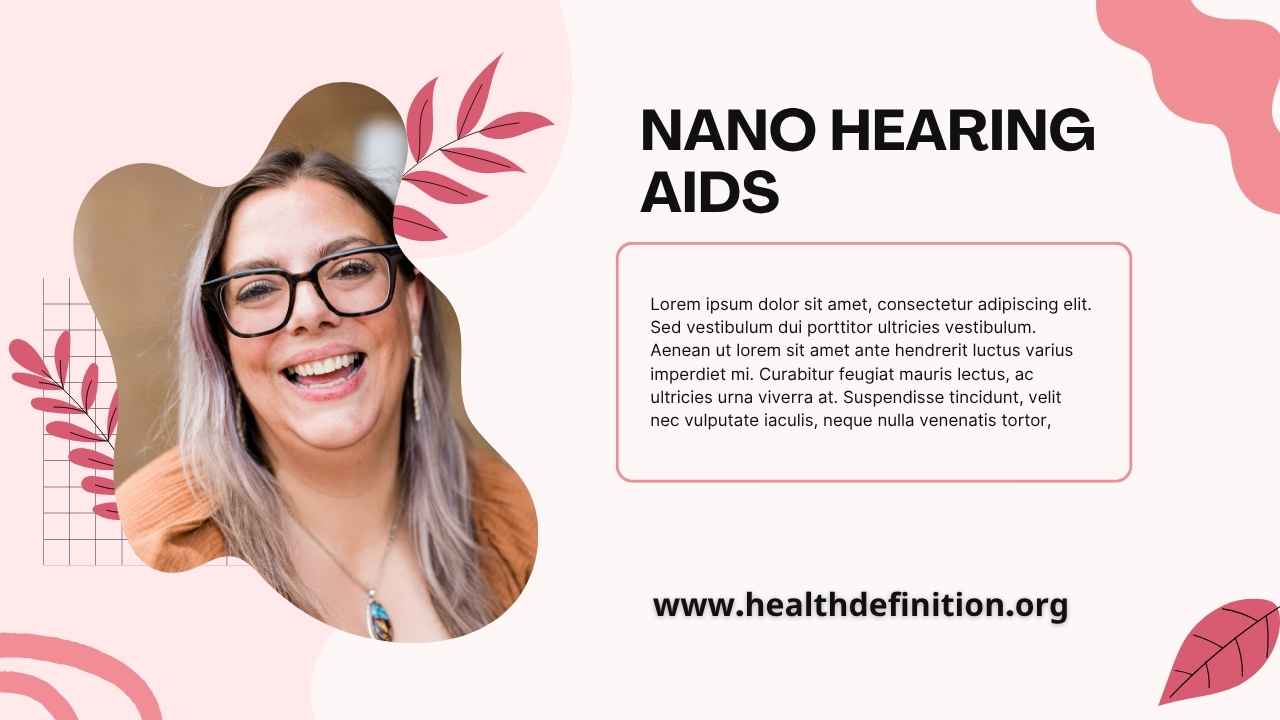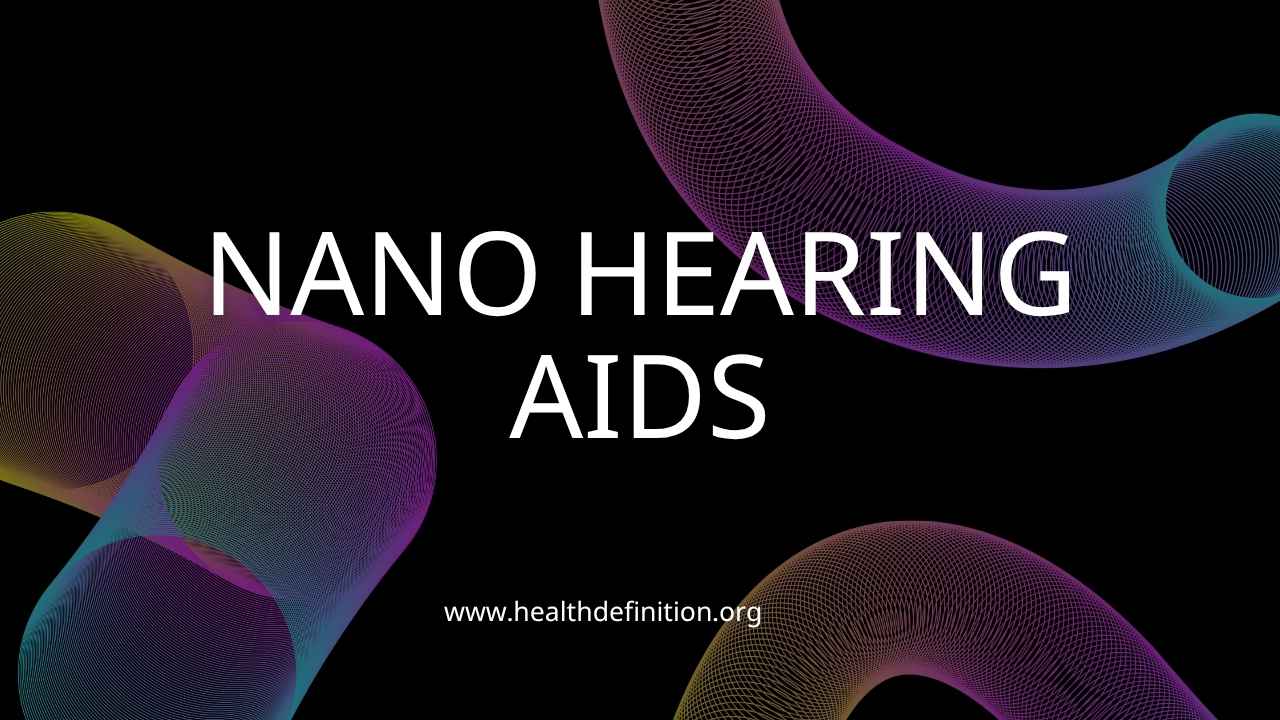
In a world where technology continues to make life easier, Nano hearing aids are a prime example of how innovation can help improve everyday living for millions. Whether you’re struggling with mild hearing loss or moderate hearing challenges, Nano hearing aids offer a compact, affordable, and discreet option to enhance your auditory experience.
This comprehensive blog will explore what Nano hearing aids are, how they work, their benefits, comparisons to traditional hearing aids, and what makes them one of the top choices for those in need of better hearing today.
What Are Nano Hearing Aids?
Nano hearing aids are small, discreet, and powerful devices designed to assist people with hearing loss. Produced by Nano Hearing Aids, a U.S.-based company, these hearing devices are tailored for convenience, affordability, and modern lifestyles.
They are typically categorized as over-the-counter (OTC) hearing aids, meaning you don’t need a prescription or audiologist visit to purchase them. Most models are ready to use out of the box, making them especially attractive to people who want quick and accessible solutions without the high costs associated with traditional audiologist-fitted devices.

How Do Nano Hearing Aids Work?
Nano hearing aids function similarly to traditional hearing aids by amplifying sound to make conversations and ambient noises clearer. They are typically built with:
-
Microphones to detect incoming sounds
-
Digital processors to filter and adjust the sound for clarity
-
Speakers (receivers) deliver enhanced sound into the ear
-
Volume and tone controls to fine-tune audio preferences
-
Rechargeable batteries in many models for long-term use without frequent replacements
Some models come with digital noise reduction, feedback cancellation, and multiple listening modes, enabling wearers to adjust their experience according to the environment.
Benefits of Nano Hearing Aids
✅ Discreet and Comfortable Design
Nano hearing aids are designed to fit comfortably inside or behind the ear, making them almost invisible. Users often report feeling confident and unbothered by the physical presence of the device.
✅ Affordable Alternative
One of the biggest attractions of Nano hearing aids is their affordability. With prices significantly lower than traditional hearing aids (which can cost $3,000 to $6,000 per pair), Nano models often range between $300 and $600 for a pair.
✅ Easy to Use
Unlike conventional devices that require audiologist fittings, Nano hearing aids are plug-and-play. This accessibility appeals to seniors, busy adults, and anyone looking to bypass the lengthy process of testing and fitting.
✅ Rechargeable Options
Many Nano hearing aids come with rechargeable batteries, eliminating the cost and hassle of constantly replacing batteries.
✅ 45-Day Return Policy
The brand offers a money-back guarantee, allowing users to test the hearing aids risk-free.
Types of Nano Hearing Aids
Nano Hearing Aids offers a range of models tailored to meet various needs. Popular models include:
-
Nano CIC (Completely-in-Canal) – Nearly invisible, fits entirely in the ear canal.
-
Nano X2 Rechargeable – A behind-the-ear model with digital technology and rechargeable batteries.
-
Nano Sigma – App-controlled and offers advanced customization for tech-savvy users.
-
Nano RX2000 – Rechargeable and designed for moderate hearing loss.
Each model is designed with user-friendliness and affordability in mind, making them ideal for seniors and individuals new to hearing aids.

How Do Nano Hearing Aids Compare to Traditional Hearing Aids?
| Feature | Nano Hearing Aids | Traditional Hearing Aids |
|---|---|---|
| Cost | $300–$600 | $3,000–$6,000 |
| Accessibility | OTC, online purchase | Requires audiologist |
| Customization | Limited app controls | Highly customized |
| Appearance | Discreet | Varies |
| Battery | Rechargeable in most models | Rechargeable or replaceable |
| Warranty | Limited | Extended with an audiologist |
While Nano may not offer the custom fit and advanced clinical support of traditional hearing aids, they provides an effective alternative for people seeking budget-friendly and practical hearing solutions.
Who Should Use Nano Hearing Aids?
Nano hearing aids are a good choice for:
-
Seniors experiencing age-related hearing loss
-
Adults with mild to moderate hearing impairment
-
People looking for budget-friendly, OTC options
-
Individuals who prefer hassle-free, direct-to-consumer solutions
However, those with severe or profound hearing loss should still consult an audiologist to explore more advanced medical options.
Tips for Using Nano Hearing Aids
-
Start with the lowest volume and increase gradually as you adapt.
-
Charge daily if your model is rechargeable.
-
Clean regularly with a soft cloth or cleaning brush.
-
Store in a dry, cool place when not in use.
-
Use the return window to evaluate if the device suits your needs.
Popular Nano Hearing Aid Models
Nano offers several models tailored to different preferences and needs:
-
Nano CIC (Completely-in-Canal)
Small and invisible when worn, perfect for users who want maximum discretion. -
Nano X2 Rechargeable
A behind-the-ear device with volume control and a long-lasting battery. -
Nano Sigma
A smart hearing aid that connects with a mobile app for customized sound control. -
Nano RX2000
Rechargeable, easy-to-use, and designed for daily wear without fuss.
Each model is crafted to be durable, comfortable, and effective for people seeking a straightforward hearing solution.
Who Should Use Nano Hearing Aids?
Nano hearing aids are ideal for:
-
Adults experiencing age-related hearing loss
-
People with mild to moderate hearing challenges
-
First-time hearing aid users looking for an affordable solution
-
Seniors who prefer simple, no-fuss hearing devices
-
Individuals are avoiding the high costs and waiting times of traditional audiologists
However, users with severe or profound hearing loss should seek professional evaluation before purchasing.
How to Use Nano Hearing Aids
Using Nano hearing aids is simple and intuitive:
-
Unbox and charge the device (if rechargeable).
-
Insert the hearing aid comfortably into the ear or behind the ear.
-
Adjust the volume and mode using the manual controls or app (for smart models).
-
Test it in different environments, such as at home, outdoors, or in a restaurant.
-
Clean and store properly when not in use.
With minimal setup required, most users can start enjoying better hearing right out of the box.
Customer Experience and Support
Nano Hearing Aids is known for exceptional customer service. They offer:
-
Free U.S. shipping
-
45-day money-back guarantee
-
Phone and email support
-
Simple return and exchange policies
This customer-first approach adds peace of mind for anyone trying hearing aids for the first time.
Why Nano Hearing Aids Are Different
Nano hearing aids distinguish themselves from other products in the market in several important ways:
-
Over-the-Counter (OTC): You don’t need a prescription or professional fitting.
-
Affordable: Costing a fraction of traditional hearing aids, Nano makes hearing assistance accessible.
-
Discreet Design: Their small size makes them almost invisible when worn.
-
Rechargeable: Many models feature long-lasting, rechargeable batteries.
-
User-Friendly: Simple setup and usage for people of all ages.
Nano’s product line is tailored for convenience and effectiveness, making it easier than ever for individuals to manage hearing loss on their terms.
Key Features of Nano Hearing Aids
1. Nearly Invisible Design
Nano hearing aids come in discreet models such as CIC (Completely-in-Canal) that fit snugly inside the ear. These designs are ideal for users looking for a subtle device that doesn’t draw attention.
2. Rechargeable Battery Technology
Many Nano models feature built-in rechargeable batteries that can last an entire day on a single charge. This not only saves money over time but also eliminates the need for frequent battery changes.
3. Multi-Environment Sound Settings
Whether you’re in a quiet room or a bustling restaurant, Nano hearing aids often come with adjustable sound modes that allow users to tailor their experience to the environment.
4. Background Noise Reduction
Nano devices use digital signal processing to filter out ambient noise, making speech clearer and enhancing overall sound quality.
5. Feedback Suppression
Built-in technology reduces the annoying high-pitched feedback that some hearing aids can produce.
Popular Nano Hearing Aid Models
-
Nano CIC: Designed to fit entirely in the canal, providing discreet wear and natural sound delivery.
-
Nano X2 Rechargeable: A behind-the-ear model with powerful sound amplification and simple volume control.
-
Nano Sigma: App-compatible, allowing for personalized sound adjustments through a smartphone.
-
Nano RX2000: A cost-effective, rechargeable solution for those new to hearing aids.
Each of these models is designed with specific user needs in mind, allowing individuals to choose the one that fits their hearing loss level and lifestyle.
Advantages of Nano Hearing Aids
-
Affordable Entry to Hearing Assistance
Traditional hearing aids can cost anywhere from $3,000 to $6,000 per pair. Nano hearing aids range from $297 to $697, making them far more accessible to the average consumer. -
No Professional Appointments Needed
Since they’re over-the-counter, users can avoid the long wait times and fees associated with hearing clinics. -
45-Day Risk-Free Trial
Nano offers a generous return policy, letting customers test their devices and return them if unsatisfied. -
Customer Service and Support
A dedicated support team is available for setup help, troubleshooting, and general guidance.

Conclusion
Nano hearing aids represent a new generation of smart, affordable, and easy-to-use hearing technology. By bypassing traditional hurdles like doctor visits and high costs, they make better hearing accessible to more people than ever. With discreet designs, rechargeable options, and a risk-free trial period, they’re an appealing choice for many dealing with hearing loss.
If you’re in the market for a reliable, non-invasive hearing solution, Nano hearing aids might be the perfect fit.
FAQs about Nano Hearing Aids
Q1: Are Nano hearing aids FDA-approved?
A1: Nano hearing aids are sold as Class I medical devices and are registered with the FDA, but are not approved through clinical trials like prescription hearing aids.
Q2: Can I wear Nano hearing aids all day?
A2: Yes, they are designed for all-day wear, though it’s recommended to remove them during sleep or showering.
Q3: Do Nano hearing aids work for severe hearing loss?
A3: They are most effective for mild to moderate hearing loss. Those with severe hearing loss should seek professional consultation.
Q4: How long does shipping take?
A4: Most orders within the U.S. arrive within 3–7 business days.
Q5: Is there customer support available?
A5: Yes, Nano offers phone and online support for customers needing help with setup or usage.
Bullet Points Summary
-
Nano hearing aids are over-the-counter (OTC) devices for mild to moderate hearing loss.
-
No prescription or audiologist visit is required.
-
Discreet, comfortable, and easy to use.
-
Rechargeable models are available.
-
Affordable compared to traditional hearing aids.
-
Great for seniors and budget-conscious users.
-
45-day money-back guarantee.
-
Digital sound technology for improved clarity.
-
Multiple models for different preferences.
-
Shipped directly to your home.






